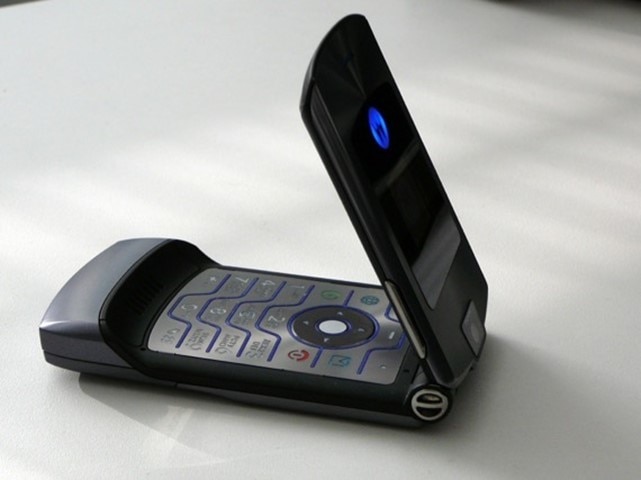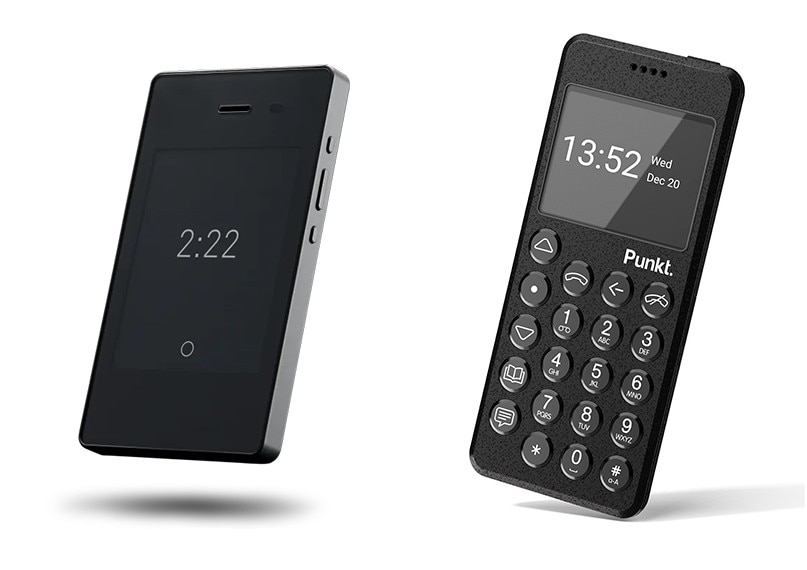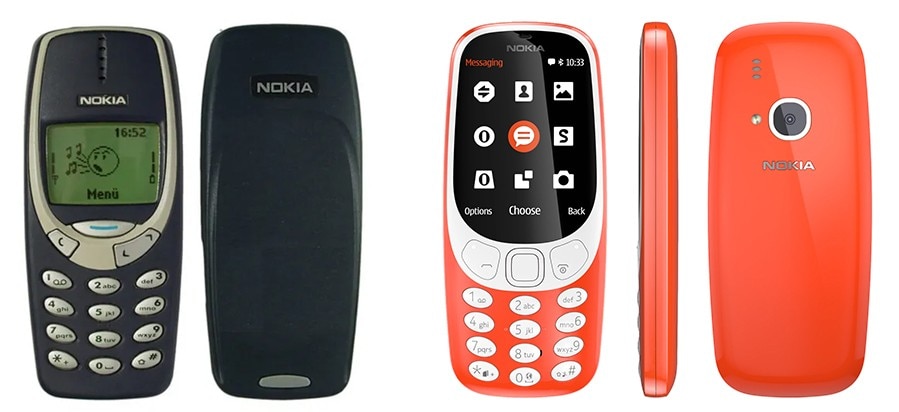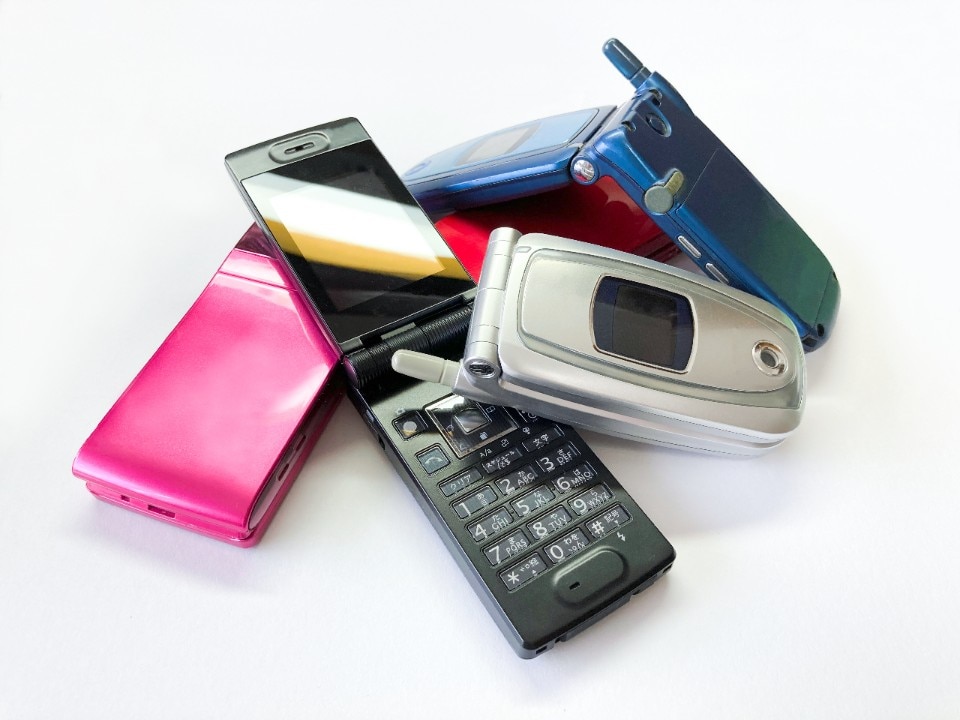What is a dumb phone? Basically it’s the opposite of a “smart” phone. Yes, in American English dumb means someone lacking intelligence, but also someone who is temporarily unable to speak, or a device that can only transfer data but not process them.
Today, we take for granted that phones can do many other things other than calling: take pictures, pay cashless, book a taxi or a room, find our way around us with maps and so on. This was not the case twenty years ago. The widespread technological tale sees in the launch of the first iPhone in 2007 the revolution in the paradigm. In reality, the change of pace was much more gradual, the first iPhone only had a handful of apps and there was no camera to take selfies with. Phones that connected to the Internet already existed and allowed a limited niche of people to write documents and read emails with the Windows or Palm operating system or the famous Blackberry.

The dumb phones, often called with the more elegant title of feature phones, are still being produced today, at a time in which we, Westerners, take smartphones for granted. These phones can make calls, send messages, and some of them even have basic apps, like Maps or WhatsApp. Nokia, one of the most popular brands at the pre-smartphone time, is still a leader in the field together with Itel, Reliance Jio and Samsung in markets like Africa and some parts of Asia, like India and the Middle East, where, for various reasons, smartphones are still not widely spreads.
According to Counterpoint research, that’s where 80% of the smartphones are marketed. But something is changing, as the Gead of Markeing at Nokia (today part of HMD Global) Lars Silberbauer has recently explained to Euronews: the flip phone market is up 5% in the USA and is taking off even in Europe. The brand has recently relaunched the Nokia 2660 Flip, a mobile phone originally released in 2007, with new color options. The flip phone is the “noble” model of dumb phones, and its form factor has regained popularity with the recent introduction of foldable smartphones. For example, Motorola's Razr, one of the most famous phones of the early 2000s, has returned in the form of a “smartfold.”
Gen Z loves dumb phones. For real?
In the New York Times the comeback of dumb phones has recently become a beautiful page in between the lifestyle and literature section. It was written by Liana Satenstein, who herself seems straight out of a story by Emma Cline – a young New Yorker, Vogue contributor, YouTuber, with a family in New England. In her article entitled “Flipping Out,” she starts by saying: “I started flirting with the idea of getting a flip phone while watching a TikTok livestream of someone shaving a grape at 2 a.m.” But the turning point is when she goes back to the hometown, clearly exhausted from life in the Big Apple, and sees a herd of deer by a highway and has an epiphany. There is a whole world outside the phone. She rushes into a Walmart to buy a dumb phone and it seems like she’s gone back to the Golden Age.
With that euphoric naiveté with which often media approach topics on the border between lifestyle and consumer electronics, we owe the comeback of the dumb phones, according to newspapers, especially American ones, all to Gen Z. The Gen Z who, once again according to the news’ storytelling and mythologization, loves Y2K technologies and doesn’t like the smartphones they grew up with all that much, as if they were taking on the regrets of their fathers, mothers, older brothers and sisters – who by the way happen to be the ones writing those newspapers – who let the iPhone enter their lives in such an overwhelming way. So Gen Z loves to take photos with analog and digital cameras, listens to music on Walkman and iPods, strictly buys paper books, possibly from an independent bookstore, uses wired earbuds and, of course, dumb phones.

The myth of disconnection
People have been talking a lot about going back to a “dumber” phone, in all truth they have been for the past five years or so. It wasn’t only HMD to do so, which still designs pretty good ones (see the Nokia 2660 Flip, launched the past August). Companies like the Swiss Punkt and the American Light have been working for years on highly curated cellphones precisely aimed at the digital detox of those who want to flee the strain of a life that is now all about smartphone and notification. The Light Phone 2 is a phone that has a small EINK screen: it makes calls, sends short messages, and installs basic apps like maps, music or notes, through a web interface. For an even more essential model, there is the MP02 by Punkt designed by Jasper Morrison: there is no touch interface but physical keys, the only “smart” features are the messages which are compatible with Signal (a super safe WhatsApp-like app) and the possibility of using the phone as a hotspot. Both models cost just like a mid-range smartphone, because the myth of disconnection is not for poor people, and on top of that they have the charm of a device that breaks the routine, something to be used during the weekends or a vacation, but probably unthinkable for one simple weekend.

Flipping Out is the novel of the dumb phone consciousness. Satenstein discovers that a disconnected phone is as charming as it is inconvenient. She reaches precisely the same conclusions that anyone that tried to switch to their old phone from twenty years ago even only for a weekend or during the Christmas holidays: you’ll need an iPod or a CD-player, because otherwise you can’t listen to music (and forget about podcasts, even if that might be a good thing); you’ll need a camera or a pad if you want to jot down something quickly (unless you have a Remarkable or a Alphasmart). And then you’ll need your physical credit cards, no Uber. Not to mention maps: we cannot do without, not even to cross just a few blocks from home, but paper maps make us look ridiculous, “like a confused French tourist from the ’90s who’s exploring the glorious Big Apple.” she writes. But above all no Instagram, no WhatsApp, no iMessage, no Twitter, nothing at all. Which seems a good thing at first…but maybe it’s not.
La lesson of the dumb phone
Dumb phones are the definitive utopia of our time, reinforced by the appeal of that Y2K aesthetics that is trending now. The “dumb” phone is for Gen Z the dream of a world that they never experienced. For those who were already there before we evolved into these proto cyborgs that are always on their phones even when walking, bent neck as in a bow, the dumb phone represents the dream of going back to a world that was not any better at all, but we like to think it was. Because the past, just like the future, is aways optimistically better than the present. Especially when compared to a present in which communication is fragmentary, it’s hard to find a balance between digital and real life, dating apps don’t take you anywhere, and on weekend you find your work chats invaded by the photos of homemade pizzas your colleges sent to share their enthusiasm for baking while you just want to put a barrier back in between your private life and work.
In this regard, dumb phones do have a value: they are a workout. They reactivate all our mental muscles that are left to slumber. Like when we used to take out Nokia twenty years ago and had to rebuild our contact list from scratch instead of conveniently downloading it from the cloud – using a dumb phone can reset many expectations. It loosens you from the mass loop you are in. It cleans up. In that sense, it will never be the solution, but it does make some solutions easier, like simply silence notifications during the weekends or uninstall WhastApp on vacation.


